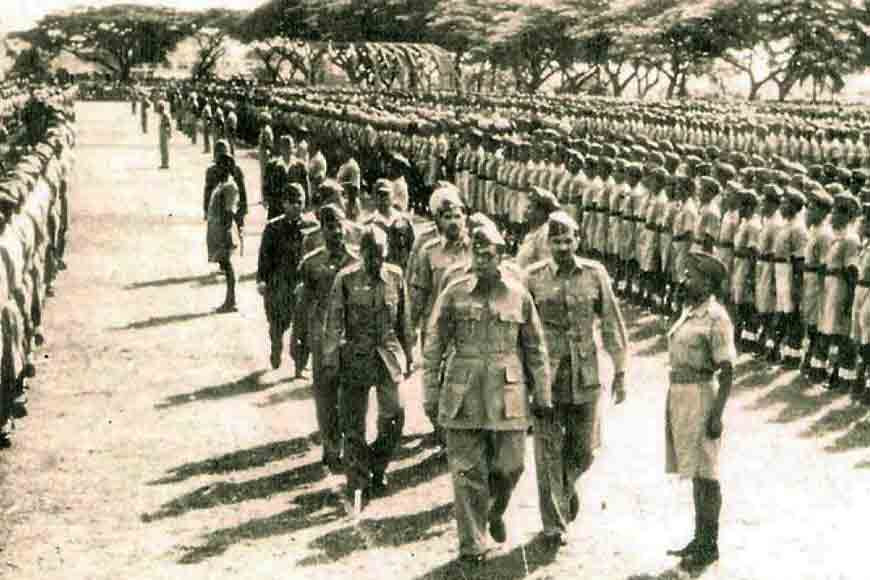How did Netaji bring communal harmony in INA

Netaji was very keen that the members of different religious communities should learn more about the religious faiths and practices of other communities; and on ceremonial occasions take part in the celebrations.
In the 1940s, Subhas Chandra Bose gave up his earlier inhibitions about meat and other food restrictions and so on, but remained essentially the same man in terms of his values.His biggest achievement in public life was to bring about the unity all of the religious communities of India: Hindus, Muslims, Sikhs and Christians. Mahatma Gandhi also brought about unity among Hindus and Muslims; but Subhas actually believed in the possibility of what he described as cultural intimacy among the different religious communities of India.
That is why he was very keen that the members of different religious communities should learn more about the religious faiths and practices of other communities; and on ceremonial occasions take part in the celebrations.He felt that on Muslim festivals, Muslims may actually invite Hindus and vice versa.
His biggest achievement in public life was to bring about the unity all of the religious communities of India: Hindus, Muslims, Sikhs and Christians. Mahatma Gandhi also brought about unity among Hindus and Muslims; but Subhas actually believed in the possibility of what he described as cultural intimacy among the different religious communities of India.
Actually, I found it very moving to write the small passage that I have on the construction of a memorial to the fallen heroes of Indian National Army. It was designed and built by Cyril John Stracey, an Anglo-Indian officer of the INA. Subhas Chandra Bose met him on August 15, 1945, and examined the designs for the memorial. He asked Stracey if the memorial could be completed before the British landed in Singapore.
“Certainly, Sir,” Stracey replied, and with a salute and ‘Jai Hind’ marched off to build the edifice in record time. It would bear the INA motto Itmad (Faith), Ittefaq (Unity), and Qurbani (Sacrifice).Subhas was really a very broad-minded man. He himself had been deeply influenced by Vivekananda. He himself was a devotee of the Mother Goddess.
But he never made a display of it. And in my book I have quoted SA Ayer, who said that Netaji never spoke his God, he lived Him. He married someone who was a Christian, a Catholic.
When he was going on his submarine voyage, the one companion he chose was a Muslim. When the INA Memorial had to be built, it was a Christian officer who was given the task.So, he was someone who was able to both respect and transcend religious differences. And, when he writes to Emilie in March 1936, he says that he has forgotten all these differences of Indian and European and what I love is really the woman in you, the soul in you.
(In the third part of his four-part interview to Arthur Pais, biographer Sugata Bose talks about Netaji’s time in Europe)










